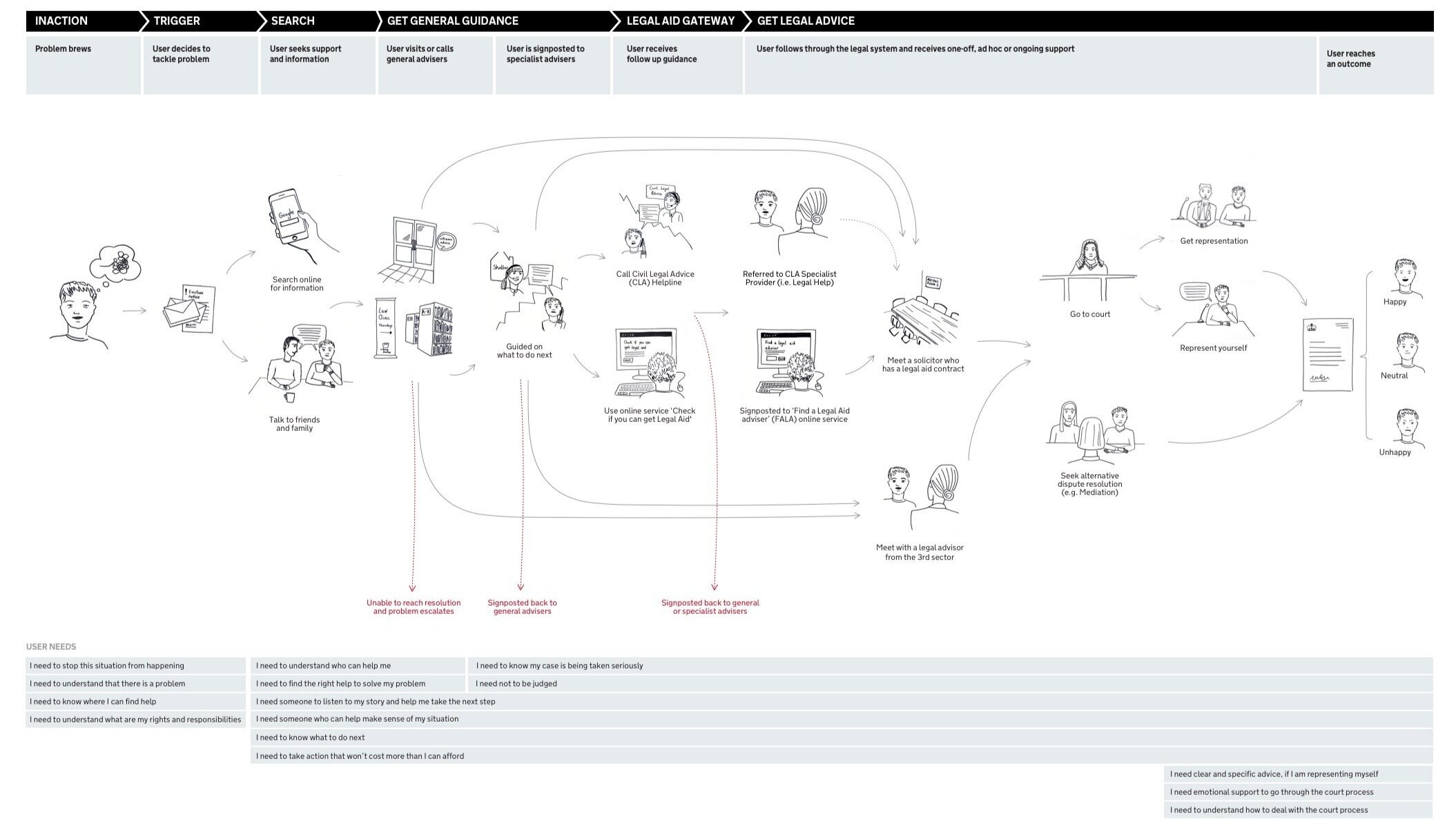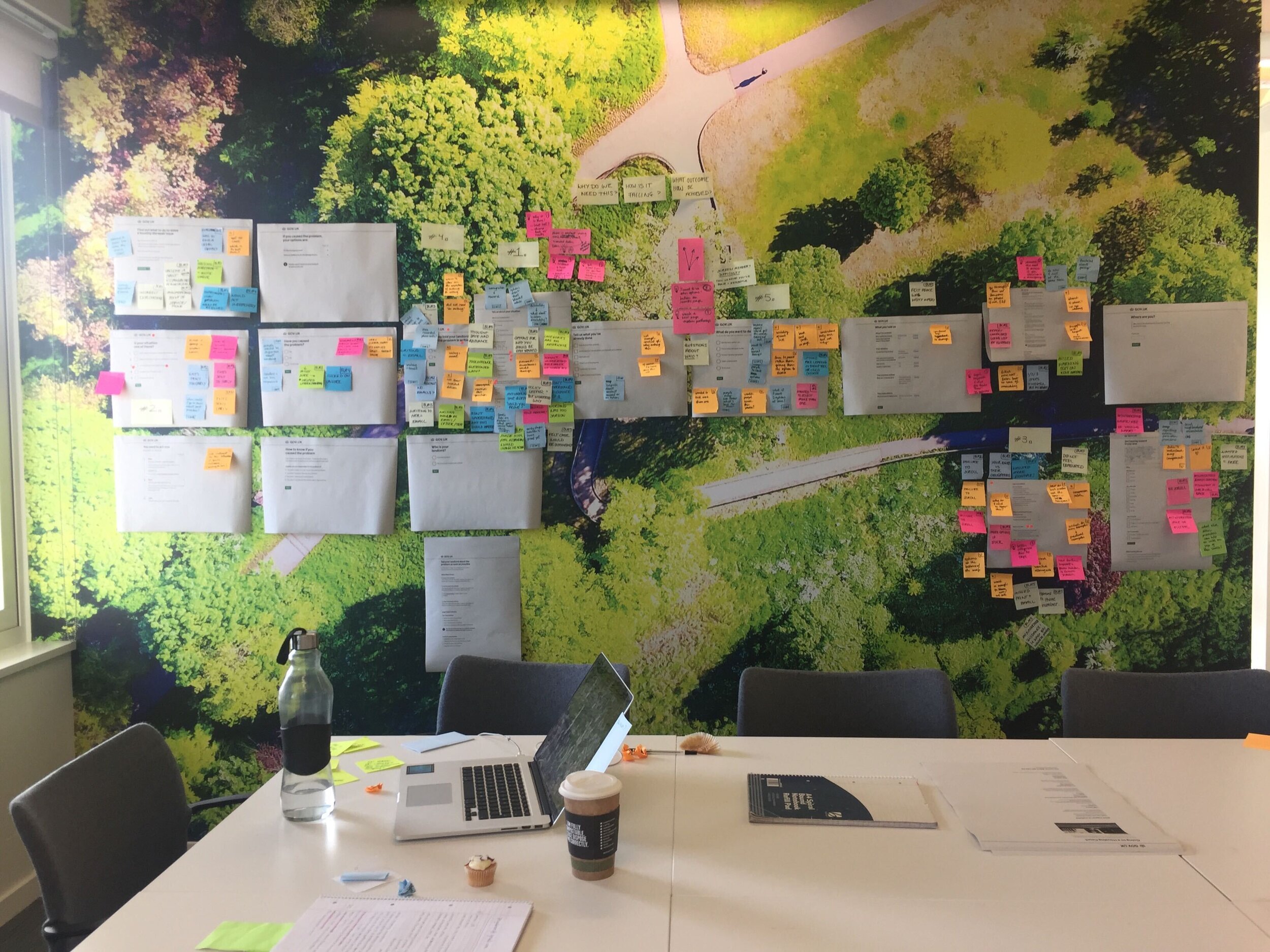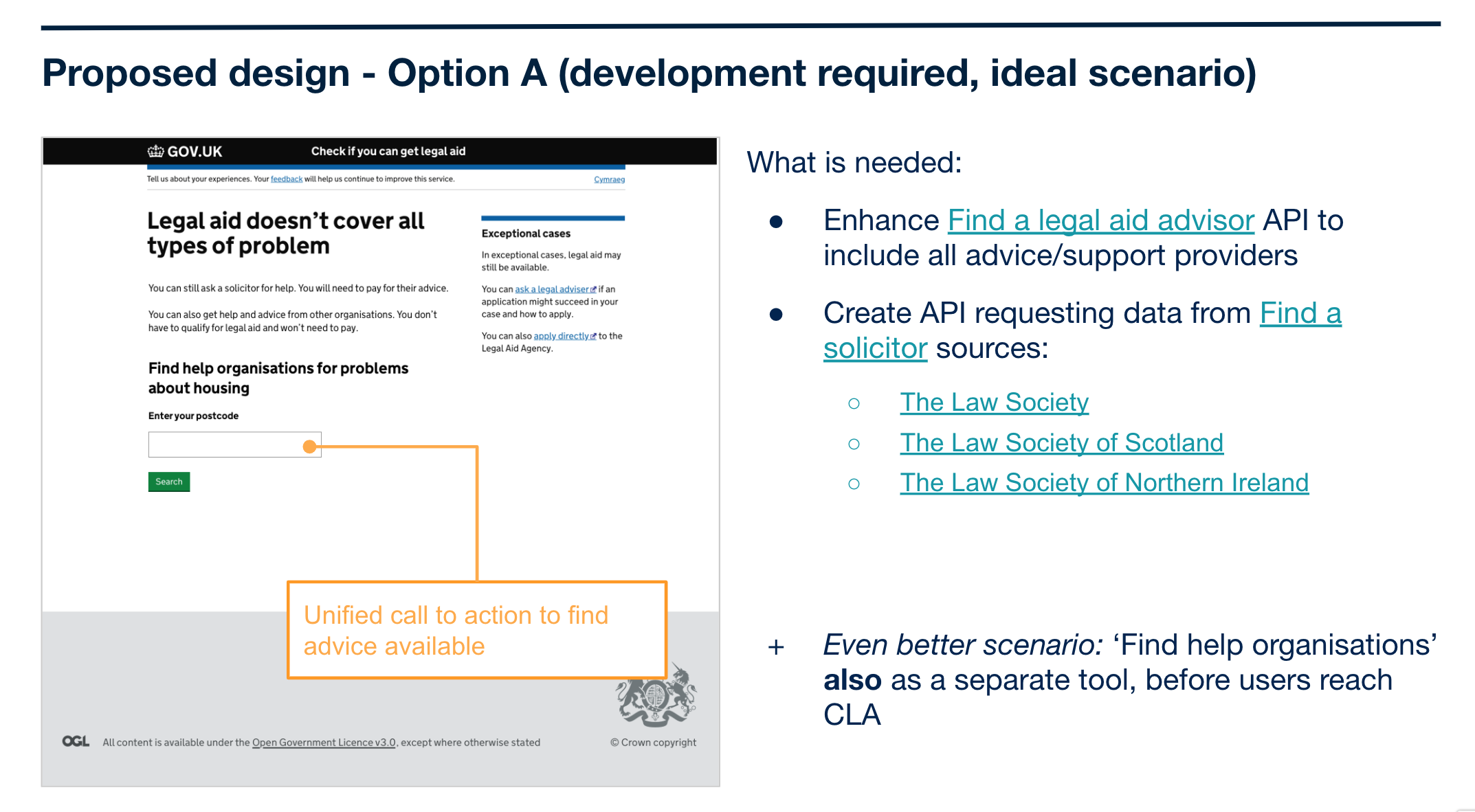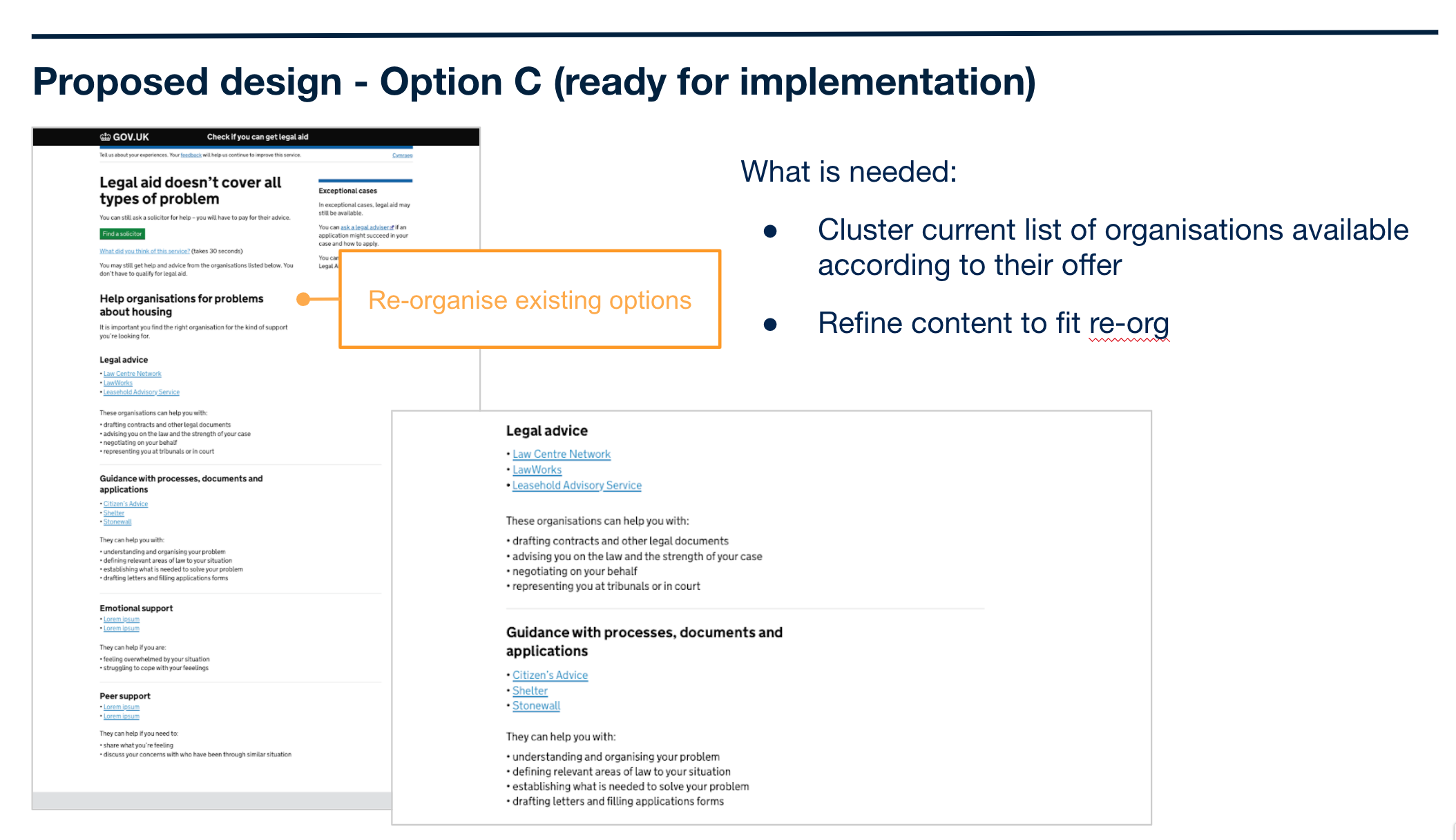
Supporting people with legal issues
Background
Many members of the public are not able to afford private legal services and don’t qualify for legal aid. They have to navigate the complexity of the justice system by themselves while also living through a moment of crisis. The UK Ministry of Justice wanted to publish an action plan to deliver better support to people with legal problems. This was a response to a policy change that happened in 2012 which significantly reduced the provision of funding for legal services.
Task
Our team suggested to policy colleagues that before drafting any delivery plans, we should seek to better understand the experience of people with legal issues. The policy team agreed on doing that but they only had two months until the action plan had to be published – so time was of the essence.
Role and approach
We went on a discovery to understand what people with legal problems do to solve their issues, and what blocks them from resolving their situation. We also wanted to understand their circumstances and what types of problems they face. This discovery then led the team to ideation, prototyping and testing.
Part 1: Discovery
The discovery was led by myself and a user researcher. During this five-week discovery:
I worked closely with the user researcher, shadowing and leading some in-depth interviews
I paired with another designer who was a subject matter expert to draft the user journey
I translated the complexity of the journey and any know pain points on a visual map
I reviewed the user’s journey, pain points and needs with the user researcher
I socialised the map it with stakeholders to get further feedback
I led brainstorming sessions to ideate opportunities for improvement
I produced a simpler version of the map which I presented to Minister Paul Maynard

Socialising the map with stakeholders

Second round of validation with stakeholders
Screenshot of an overview and a close-up of the ‘seek legal support’ journey map

Screenshot of the version presented to the Minister. Illustrations: Carolina Pizatto and Eve Bayram
Alongside the team, I identified five opportunities areas and share them back with policy colleagues. The map has played an important role on driving policy decisions. It was used to define future strategies; grounding them on user needs and their journey.

Opportunities for improvement identified through user research for the journey of seeking legal supporting
Part 2: Alpha
There were many problems to be solved, so we prioritised what to tackle first.
We decided to look at how to better coordinate and signpost legal support services. With that in mind, we went out to research and focused our efforts on understanding signposting in one particular area of law: housing disrepair.
Based on research findings, we prototyped an online service and tested it with members of the public and expert advisors.

Research: What signposting in court looks like

Ideation: Testing concepts with stakeholders

Design: Paper prototyping the chosen solution

Test: Guerilla testing in a public library

Iterate: Prioritising iterations for next round of testing
In the meantime…
In my available time I pro-actively conducted a light-touch evaluation on a key touchpoint users interact with when seeking legal support – the online service ‘Check if you can get legal aid’. In my evaluation:
I highlighted potential issues on its exit page based on the user’s end-to-end journey
I suggested improvements (from reorganising elements in the page to creating new products)
I organised my suggestions into options and shared them with the team responsible for the service



Results
This work resulted in a user-centred strategy. The insights captured in the journey map were shared with decision-makers and influenced the government’s Legal Support Action Plan.
It also helped Policy to test potential solutions before committing to a particular approach. For example, the action plan suggests more in depth exploration on signposting (which we did in Alpha) instead of the introduction of a new website (which is what Policy wanted to do originally).
A different team picked up the work to move the signposting service we designed and tested in Alpha to Beta. They went through more cycles of research and design, and have since launched the ‘Check how to get repairs done in your rented home’ service so evaluation can continue on a live environment.
Finally, my suggestions to improve the exit page of ‘Check if you can get legal aid’ were not implemented yet because the service is going through a wider evaluation and will probably need redesign. I am hopeful these considerations will be picked up as part of the redesign.
Read more about this project on my blog at the MOJ Digital and Technology page.
